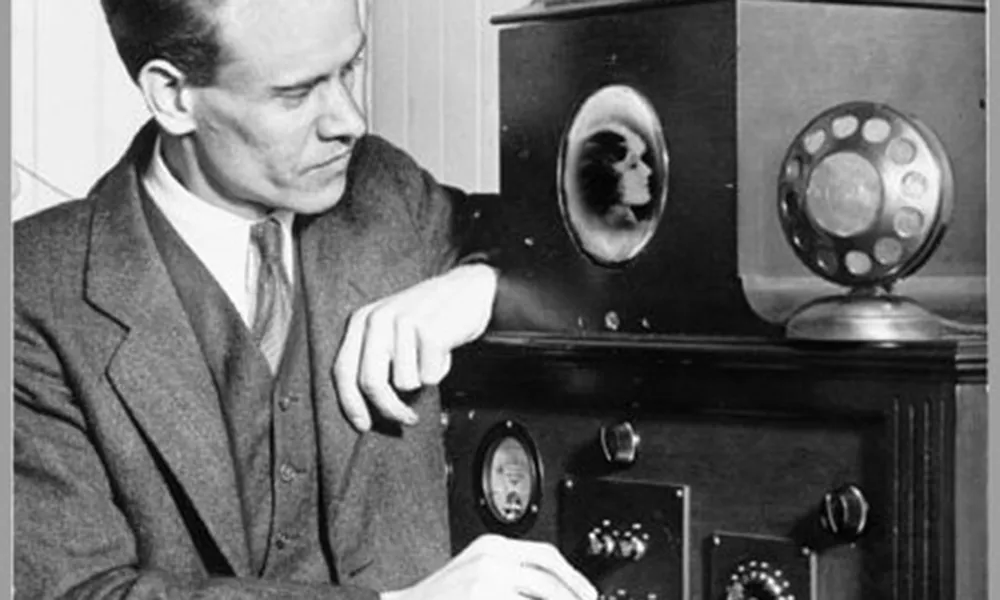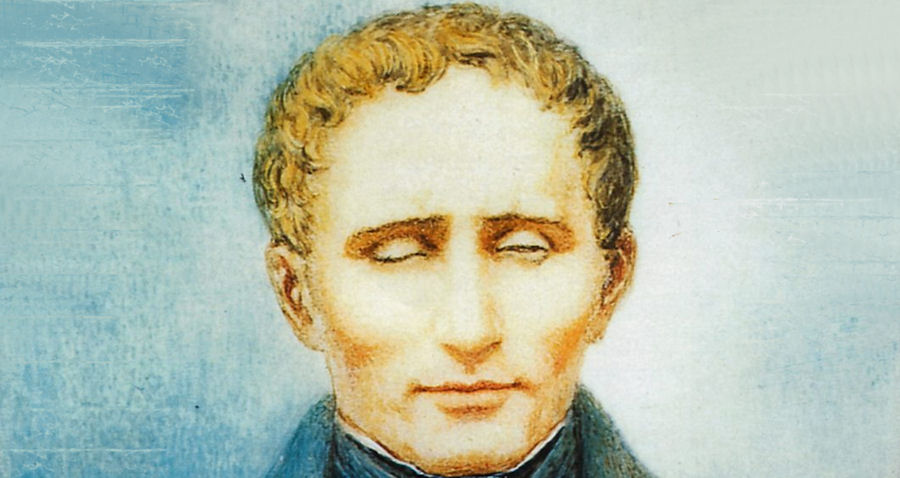Inventions (and inventors) are impacting our worlds each day and, as technology continues advancing, the potential that new inventions bring with them is astronomical. For many, life before the smartphone age is a distant and perhaps a fuzzy memory. But we did need to print directions from a website called MapQuest if we didn't know where we were going. Also, there was a time when computers couldn't even connect to the Internet—because it didn't exist yet. That one invention, however, has drastically changed many aspects of our lives, making things much easier for countless connected individuals. It’s not just veteran scientists and computer programmers who create these world-changing and progress-oriented solutions, however. There are plenty of inventive kids and teenagers who've made a mark on the world with their inventions as well.
Param Jaggi
Throughout history, children and teens have been responsible for plenty of inventions, like the popsicle, for example, which was invented after a kid left a stick dipped in a bowl of water outdoors overnight. This was obviously quite a while ago but plenty of student inventors have also shared inventive solutions much more recently. Like inventions in the past, some of these might happen by accident or without much intent, while others are born out of necessity to help solve a pressing problem. By harnessing the spirit of invention and leaning on some of the values of the Maker Movement, there are many children and young adults who are doing good for our world. And, many of them are using entrepreneurial skills and an inventor’s mindset.
That’s certainly the case with this first young inventor. Param Jaggi began experimenting and working with environmental technologies when he was only 13 years of age. Of course, environmental efficiency and preservation are huge focal points among scientists, world leaders, and citizens today. Using his inventive spirit and recognizing some key needs, Param designed an invention while learning to drive as a teenager. In a conservation effort, he built a device that could convert some of the car's emitted carbon dioxide into oxygen. His device helped save energy and improve air quality, leading to Param receiving various awards. He was also included in the Forbes 30 under 30 list of innovators changing the energy sector.
Param’s story is one that can also inspire additional inventions for optimizing energy use or its efficiency. If you turn on the news or just browse some news websites, there's probably topics you'll hear a lot about. Especially as presidential debates are now ramping up, this should continue to be a big conversation topic. So, simply by using Param’s example, children could try to build onto this ingenuity and find ways to make these solutions more user-friendly, efficient, or affordable. If there's not yet technology available for making improvements, it may be available eventually. So, it's all about maintaining that inventive spirit, recognizing societal needs, and collaborating to reach a common goal.
Cassidy Goldstein
Here’s another cool invention that we actually didn’t even know about, but one that’s geared more towards helping children. Cassidy Goldstein was only 11 years old when she invented practical crayon holders that younger kids could use. What's a crayon holder, you ask? It’s basically a clear device that's the shape of a crayon and students can insert their crayons into this tube-like structure so they can keep using them until they completely run out. If you’ve ever used crayons in your classroom, you know they wear down just like a pencil does. There are no crayon sharpeners, however, (usually), so kids can’t typically hold them in their hands once this happens even if there's still some crayon left once they near the end. Cassidy didn’t enjoy facing this problem and that led her to create this pretty ingenious solution.
Besides the practical benefits of this invention, there are also the educational ones. They are fairly obvious but these crayon holders help enable students to complete various art projects and any other tasks more efficiently without having to hunt around for new crayons as frequently. It can also help keep their creative thought process active since they'll experience fewer interruptions in their coloring. Simple improvements help make unique inventions like these so interesting and appealing for those who they can help the most. In the case of crayon holders, the biggest beneficiaries are probably kindergarten and Pre-K educators or those instructors who encourage coloring within afterschool or summer camp programs. Since children can use these holders just about anywhere, it truly was a brilliant idea from Cassidy.
The invention has actually been around for about 25 years as Cassidy came up with the idea in 1999. With this being the case, we're wondering why more teachers aren't utilizing them and why we’ve never actually seen one. Fueled by the simple desire to extend the life of her crayons, Cassidy went looking for a solution, which is exactly how many inventions come to be. Soon after inventing the crayon holders, Cassidy earned a patent, which eventually helped tons of kids, parents, and teachers everywhere. The crayon holders even appeared in countless toy shops and Cassidy also won the award as the Youth Inventor of the Year for this extremely practical invention. Today, teachers can challenge children to think about any problem they often face and use Cassidy’s example to inspire solutions.

Philo Farnsworth
This child-created invention originated long ago but then ended up aligning with one of the most significant technologies of all-time. People tend to spend countless hours simply watching television—perhaps even a few hours at some point today—but the experiences we have today were not always plausible. When Philo Farnsworth was just 14 years old (back in 1920), he revolutionized this watching experience while enabling greater convenience. We’ve become very used to having remote controls when watching TV as well as the convenience this allows for. It hasn’t always been possible to change the channel or adjust the TV volume without first getting up, however. Philo’s ingenious invention, which transformed electronics while netting him some notable money, essentially paved the way for a new age.
The television has historically been a huge part of the lives of so many people. It’s kind of hard to imagine a time without them, without there being one in every home, without there being one in every hotel room, and now without there being one in almost every bedroom of every home. Although it may be fading in terms of significance thanks to the Internet, the immediate availability of news, and, of course, streaming media with other devices, the TV was once a massive part of day-to-day life (and remains so for many in the traditional sense). Before Philo’s invention, the television wasn't nearly as prominent and the newer technology made it more impactful for people. It definitely was a key innovation—especially for originating in the 1920s.
So, what exactly did Philo’s invention help enable? He designed an electronic TV prototype when he was in high school and showed it to his teacher. At the time, most other TV designs were non-electronic and used tiny mirrors for converting light into electricity. Philo’s design included something called an image dissector, which differentiated it from others since this technology is much more efficient. The model was adopted for most subsequent television manufacturing and helped Philo make a good amount of money. Ultimately, the technology company RCA paid Philo $1 million for the rights to manufacture his design, and revolutionizing how we viewed content and developed televisions forever. It also showed how inventive creativity can both change the world and help people make a nice living.
Jack Andraka
We all know cancer is a horrible thing and many of us experience its effects in one way or another. As more research into finding cures continues to take place, scientists might need some serious innovation or some serious luck to achieve any real breakthroughs. Of course, cancer's sometimes manageable and remission is possible using the common techniques of chemotherapy or radiation but these don’t necessarily equate to discovering an actual cure. For this young inventor, creating some form of progress in the battle against cancer was something he considered a win. At just 15 years old, Jack developed new cancer tests to help detect one of the worst forms—pancreatic cancer.
Jack’s invention quickly helped to improve the diagnostic process for one of the most fatal types of cancer. Many times, once somebody realizes they have pancreatic cancer, it’s too late for any treatment because it spreads so powerfully. With this technology, Jack helped create a new kind of test as a sophomore in high school. He would utilize something called nanotube technology to test for one specific protein in the blood. When someone contracts pancreatic cancer, the pancreas emits a particular protein called mesothelin into their blood and finding it is all that it takes to confirm the diagnosis. If the test was positive and it detected the presence of mesothelin, that told Jack that pancreatic cancer was present.
For his invention, Jack received the Smithsonian American Ingenuity Award for youth achievement. He also received a prize of $75,000 at the Intel International Science and Engineering Fair for this in 2012. Although he was not the first to invent nanotube technology, he was the first to manipulate that process of using it to test for or identify the presence of pancreatic cancers. The invention brought with it the potential to change the ways doctors diagnose pancreatic cancer. For such a young person, Jack realized that something fairly simple could unlock something important in terms of cancer detections. Especially with pancreatic cancer, early detection is pretty much required for somebody to have a fighting chance and Jack serves as a great example of using technology and ingenious thinking to advance the greater good.

Louis Braille, Spencer Whale, and Catherine Wong
We couldn’t decide who the fifth and final child inventor on the list should be, so we are going with seven in total. If the first name on this list sounds familiar, there’s probably a good reason for that. Louis Braille is the inventor of the Braille alphabet and reading system for blind children and adults. Of course, this invention is still paramount in helping millions and millions of people to read books, make their way around new places, and gain all sorts of knowledge. And, it must be quite the innovation since it is still used today—almost 200 years after it was invented. Louis was just 15 when he masterminded this critically important invention after becoming blind himself at the age of three. Each braille letter and punctuation system consists of six small, raised dots in various formations and helps blind individuals read.
Now, for a really impressive childhood invention. Spencer Whale was just six years old when his trip to the hospital got him thinking of a way to make things more comfortable for kids who were forced to spend lots of time there. He came up with this idea for the KidKare Ride-On Car, which helped kids remain connected to the medical devices they needed to be on, including IV’s, and still be able to play freely. Spencer noticed it was difficult for hospitalized kids to play normally because their connected medical equipment was much too restrictive. Using Spencer’s invention, doctors or nurses could now attach things like IV bags and poles to the KidKare cars so that kids could wheel them around, play more freely, and still remain safe. Spencer's genius innovation got us thinking why nobody came up with it sooner.
Last but not least is Catherine Wong, who came up with an innovation in healthcare when just 17 years old. She realized that in many parts of the world, where top-notch healthcare is often lacking, there's much less medical technology. Despite that absence of technology, she also knew that mobile devices were prevalent enough to potentially help with treatments. So, Catherine invented a tiny device that displayed the patient’s heartbeat right on their smartphone screen. They can even use it to administer their own electrocardiogram to catch any abnormalities. For such a minute piece of technology, Catherine’s invention helped to improve key medical care and day-to-day life for millions.
All of these child inventors have accomplished some amazing things thanks to technology and could go on to create even more good. We hope these stories inspire children to harness these same types of creativity and perseverance to invent whatever they'd like. For the latest EdTech, STEM, and 21st century education news, follow us on Twitter/X or Instagram. Like us on Facebook, too, or subscribe to our newsletter for our latest product announcements and offerings. If you have ideas for an Eduporium Weekly theme, send us a message on any of our social media accounts or comment below.



